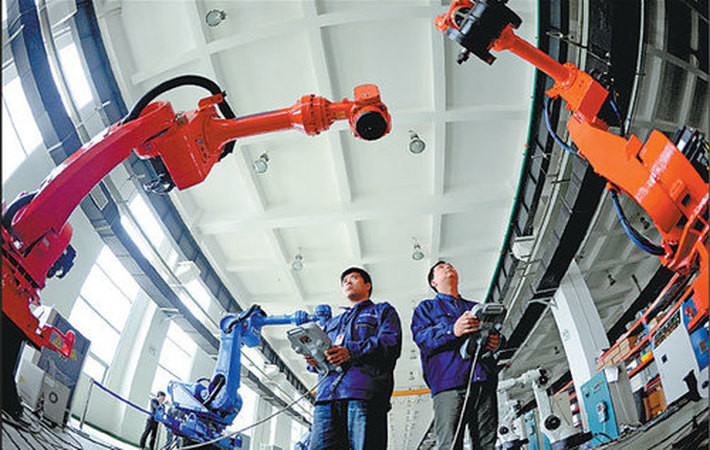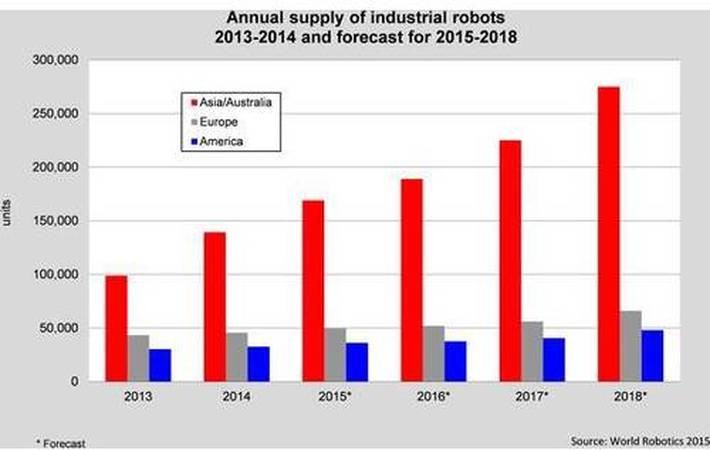
Published on 02/16/2017 | Technology
“China’s robot industry is like a toddler,” said Qu Daokui, president of Siasun. “But it is growing in the world’s largest robot market where many competitive foreign enterprises are scrambling for a piece of the pie. Opportunities abound and so do challenges.”
China has a growing hunger for industrial automation, especially when it involves robotics – but the biggest providers of such technology are located outside of China.
That’s why companies like Siasun Robot & Automation Co., China’s largest robot maker by market value, are on the rise in one of the fastest-growing economies in the world.
Siasun revealed its own seven-axis collaborative robot in November 2015 to compete with peers vying for supremacy in the Asian market. According to the International Federation of Robotics (IFR), the total supply of industrial robots in this market increased by 40 percent per year on average between 2010 and 2014
China accounts for 262,000 of installed robots worldwide and the IFR predicts that this number will reach 614,200 in 2018.

“The past two years have seen an explosion of domestic robot makers, partly stimulated by strong policy support,” said Luo Jun, chief executive officer of the International Robotics and Intelligent Equipment Industry Alliance, in an article by ChinaDaily.com.
This policy support can be found in the nation’s new five-year plan and the Made in China 2025 strategy designed to promote high-end manufacturing.
The HIT Robot Group was established in 2014 with funding from Chinese provincial government and the Harbin Institute of Technology (HIT), a Chinese university which ranked 7th for “Best Global Universities for Engineering” by US News.
Since it is currently a prestigious robotics research company, the HIT Robot Group would have an easy time staking its claim in the industry. However, many similar companies continue to be locked into low-end competition.
“Though the domestic scientific community has been researching robots for many years, the robot industry is still in its infancy,” said Hao Yucheng, deputy director of the China Robot Alliance. “The bulk of enterprises have no intellectual properties, talents or cash. They are just entering the sector with enthusiasm and doing repetitive jobs like assembling robots instead of making them.”
Yaskawa, FANUC Corp, Kuka Robotics and ABB Ltd commanded close to 70 percent of the global industrial robotics market in 2014, according to Robotenomics.com.
However, only 30 percent of 57,000 robots purchased by China in 2014 were from domestic suppliers.
“China’s robot industry is like a toddler,” said Qu Daokui, president of Siasun. “But it is growing in the world’s largest robot market where many competitive foreign enterprises are scrambling for a piece of the pie. Opportunities abound and so do challenges.”
Chinese manufacturer Shaanxi Qinchuan Machinery Development is looking to enter the industrial robot industry through production of key robot components.
The company aims to produce 5,000 speed reducer units per month by the end of 2016, according to press releases.
Siasun is hoping to acquire competitive and domestic international component manufacturers to expand its market presence.
“We have been in negotiations with potential companies for over a year and we hope to complete these aqcuisitions by June,” Qu told ChinaDaily.com.
A powerful Chinese presence in the industrial robot market could certainly disrupt the Western and European monopoly on the technology.
Furthermore, domestic options would no doubt accelerate the already rapid growth of the Chinese economy. What this means for low-skill workers is either a massive unemployment pandemic or drastically increased wages and living conditions for Chinese citizens, with higher-skill work becoming the standard.
With the efficiency of employing automation, trends will also change in western offshoring habits.
Will the US match pace with the adoption of industrial robots or will one form of cheap labor be replaced with another? Either way, China stands to profit from adopting industrial robots.
This article was originally posted on Engineering.com.